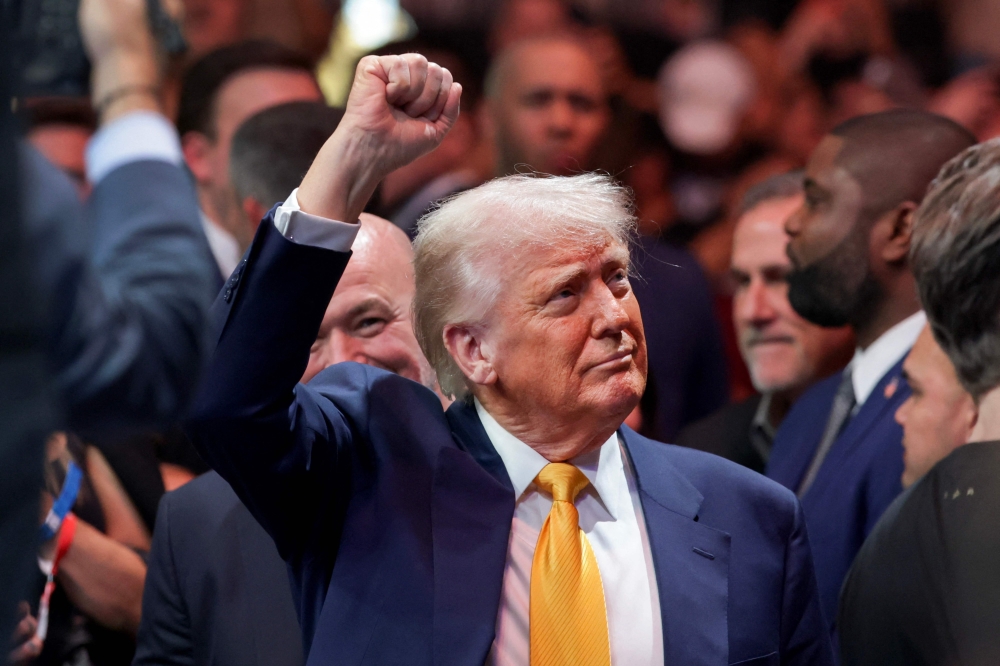Canada’s auto sector faces a reckoning amid U.S. tariffs After much anticipation, U.
S. President Donald Trump announced on April 3 a 10 per cent “reciprocal tariff” on imports from most of its trading partners, with even steeper penalties targeting select countries. Fortunately for Canada, products that meet CUSMA standards — which cover the majority of Canadian exports to the U.

S. — were spared. Canada’s next PM-in-waiting must come to grips with an awful truth: America is no longer Some called the exemption a diplomatic win.
Ontario Premier Doug Ford was quick to claim credit, attributing it to his relationship with U.S. Secretary of Commerce Howard Lutnick: “This all comes down to relationships,” he said.
Alberta Premier Danielle Smith also took a victory lap, stating: “This is exactly what I’ve been pushing for from the U.S. administration for months.
” But not everyone is celebrating. Critics point out that Canadian steel, aluminum — and now also automobiles — are still being hit with a steep 25 per cent tariff. By targeting Canada’s auto industry, Trump appears to be doubling down on his push to reshore manufacturing, dealing another blow to a sector that was once a cornerstone of Canadian industry.
Yet this is no sudden pivot — it’s part of a long-term trend. Canada’s auto sector has been in slow decline since the early 2000s. After NAFTA came into effect in 1994, Canadian light vehicle production rose from 2.
3 million units (14.8 per cent of North American output) to a peak of 3 million in 1999 (17.3 per cent).
Mexico also gained ground, growing from 1.1 million to 1.5 million vehicles and increasing its share from 7.
1 per cent to 8.7 per cent. The U.
S., though producing more in absolute numbers (up to 13 million from 12.2 million), saw its share fall from 78.
1 per cent to 74 per cent. Post-2000, the tide turned for Canada’s car industry. By 2007, just before the global financial crisis, Canadian production had slipped back to 2.
3 million units, or 14.7 per cent of the market. The U.
S. also saw a dip to 70.3 per cent of the market, while Mexico continued to expand, overtaking Canada with a 14.
9 per cent market share. The 2008-09 recession was a major blow, slashing North American output by more than 40 per cent. Although the U.
S. rebounded to precrisis levels by 2012, its share dropped to 65.4 per cent.
Canada also recovered by 2012, producing 2.5 million vehicles but failing to regain its former status, with a market share of just 15.6 per cent.
Mexico, meanwhile, surged ahead, hitting three million vehicles and a 19 per cent share. Afterward, the decline in Canada only deepened. By 2019, production had fallen to 1.
9 million units, just 11.4 per cent of the North American total. The U.
S., however, remained stable at 10.9 million units and 64.
7 per cent share, while Mexico climbed to 4 million vehicles and 23.9 per cent. Then came the pandemic, slashing North American vehicle output by 20 per cent in 2020.
The recovery that followed was sluggish, only materializing by 2023. In 2024, U.S.
output reached 10.2 million vehicles, with its market share ticking up to 65.6 per cent.
Mexico held firm at 4 million units, rising to a 25.6 per cent share. Canada, however, remained behind.
Output inched up to 1.4 million vehicles — still half a million below 2019 levels — and its share plunged to just 8.8 per cent.
In short, Mexico’s initial rise in the auto industry came at the expense of U.S. production.
But after the Great Recession, the burden of adjustment has increasingly fallen on Canada, and the pandemic only accelerated that shift. Now, Trump’s tariffs are adding more pressure to the industry. Canada’s automotive sector, as currently structured, is no longer viable.
Yet these tariffs aren’t the root cause — they’ve simply hastened a deeper, ongoing decline. Still, the end of the status quo doesn’t have to mean collapse. With bold government action, there’s real potential for reinvention.
Left to market forces, the industry would likely continue to fade — as it did in Australia. But if treated as a strategic asset, governments can step in to rebuild a self-sufficient Canadian auto industry — one that spans the full supply chain, from resources to final assembly. The global auto industry is fiercely competitive, with razor-thin margins.
A meaningful transformation will require more than tax incentives or subsidies; it demands bold public investment and strategic leadership. If Canada — and Ontario in particular — considers this sector vital, governments must go beyond supporting from the sidelines. As economist Mariana Mazzucato argues, the state can and should take an entrepreneurial role.
That means investing directly, taking equity stakes, and shaping the industry’s direction — not just to keep it afloat, but to ensure it thrives under Canadian control. Canada has what it takes: advanced technology, abundant natural resources, a skilled workforce, and the financial means to make this vision a reality. If we consider the industry strategically important and our leaders rise to the challenge, this could be a turning point — a chance to forge a prosperous, resilient, and truly Canadian auto industry.
.
Business

Canada's auto industry has been limping along for years — but the next PM could fix that

We have everything we need for a truly Canadian auto industry, writes Gustavo Indart, including technology, resources and a skilled workforce. We just need a leader with vision.















